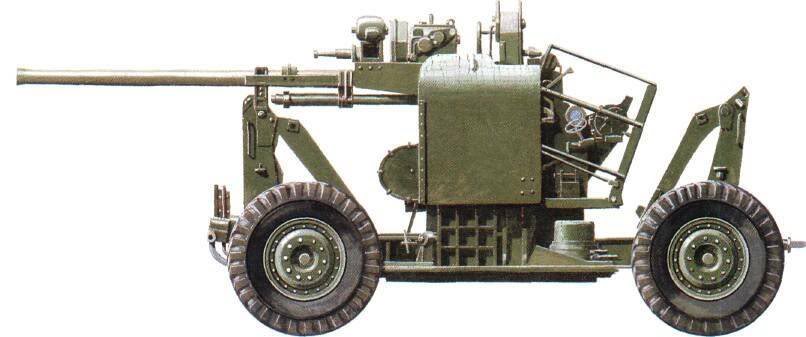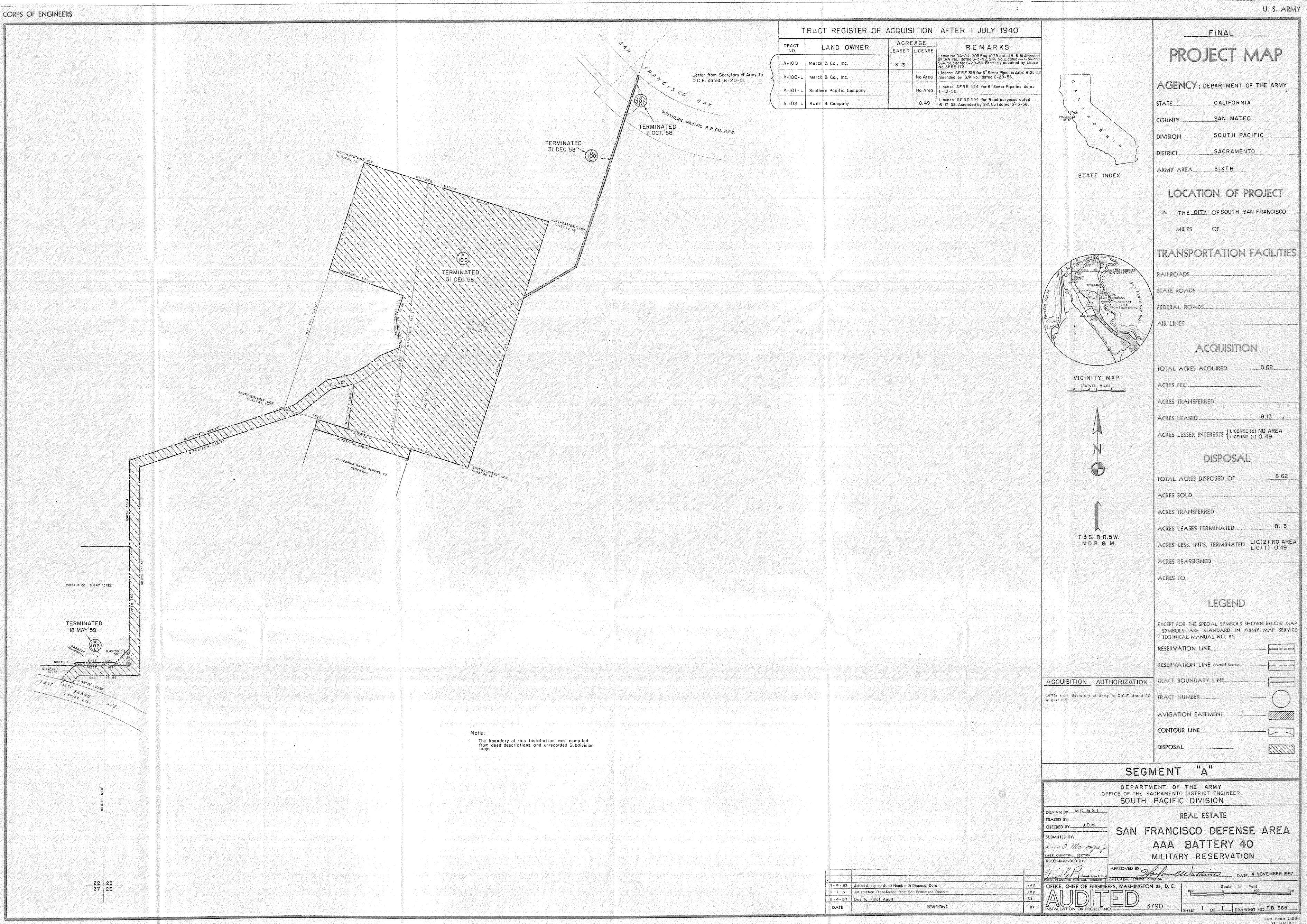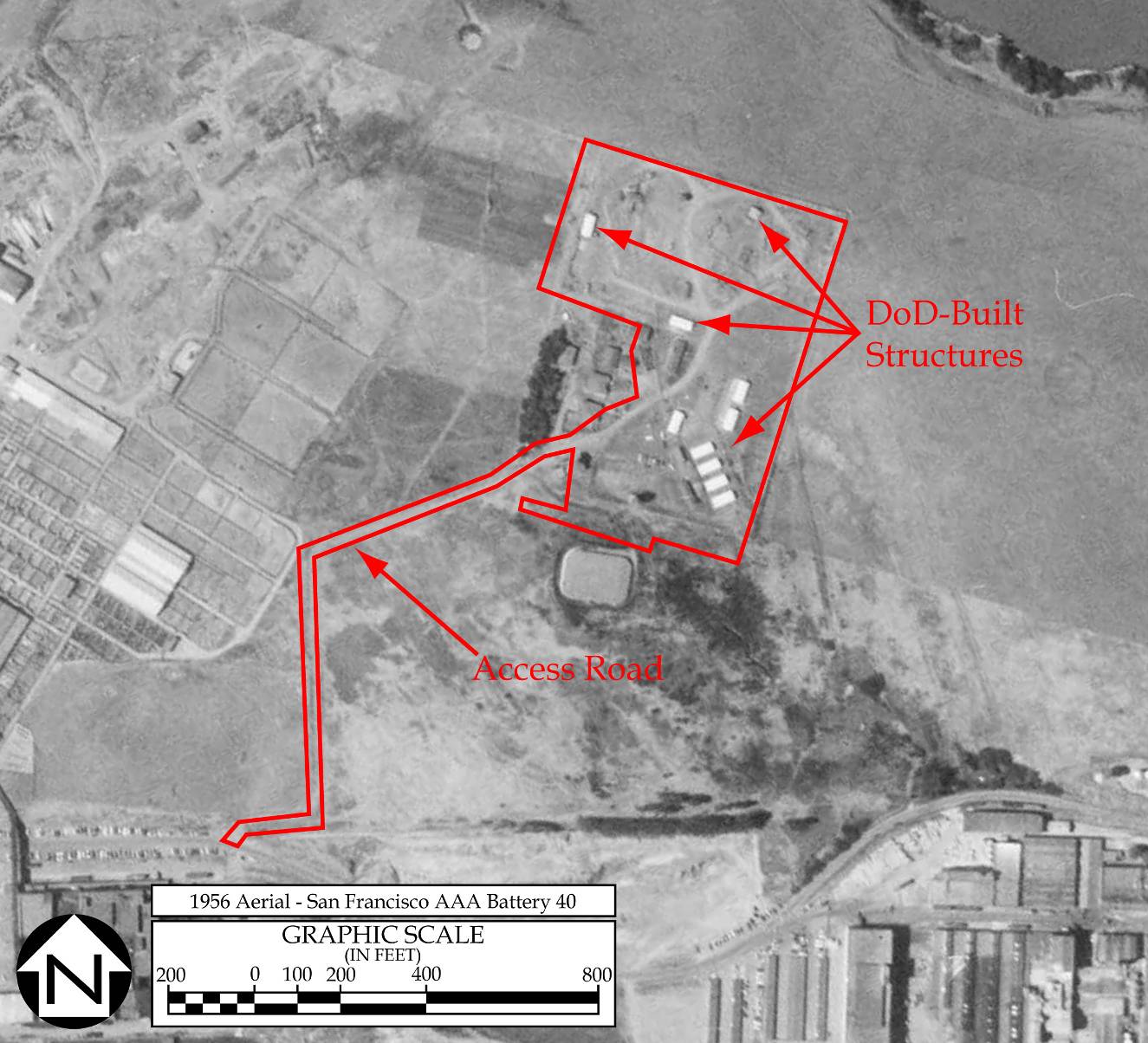
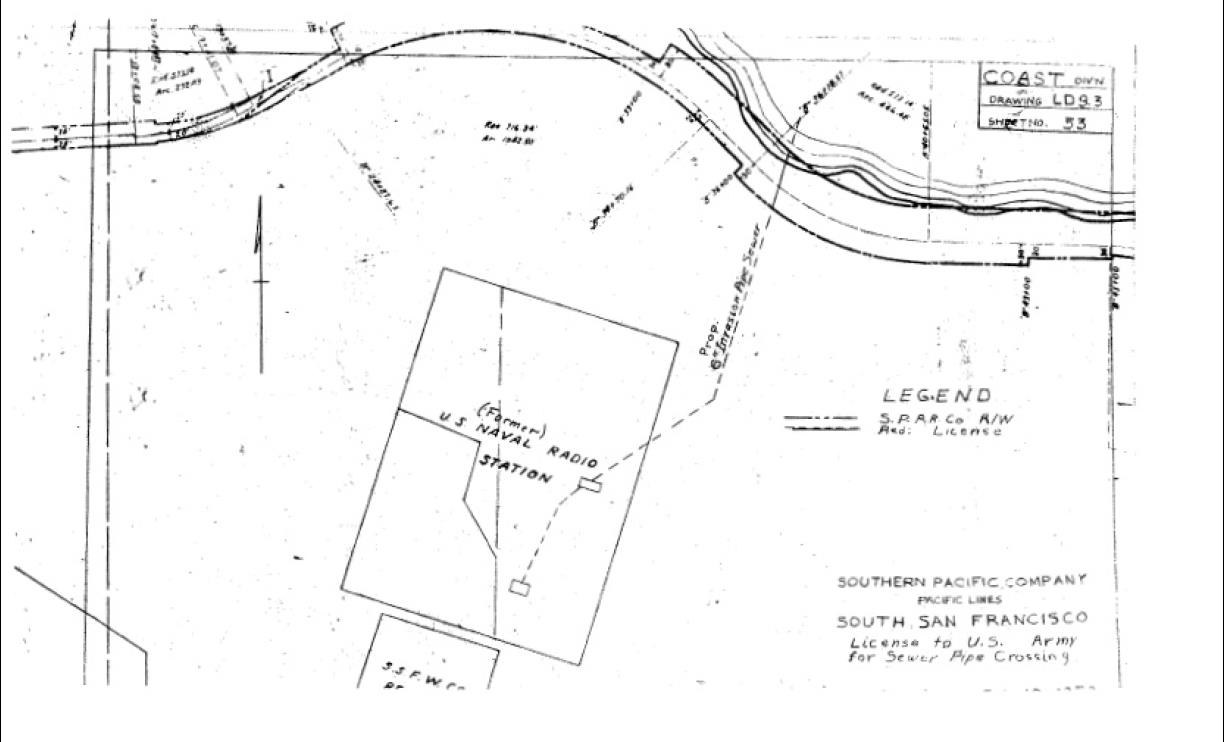
With the start of the Korean War on 25 June 1950, the possibility of an attack by long range manned bombers of the then Soviet Union caused the U.S. Army reestablish a system of antiaircraft defenses. The U.S. Army was in the middle of the development of the Nike-Ajax antiaircraft missile at that time (Moeller 1995).
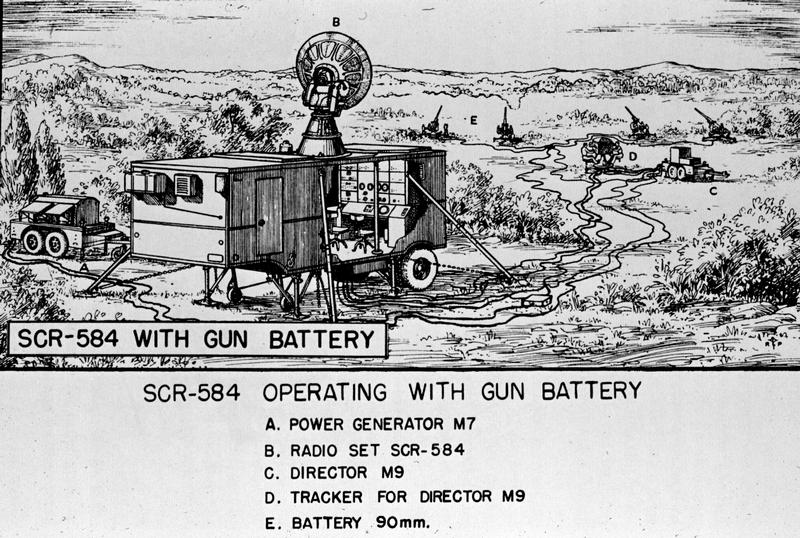
Typical 90mm Antiaircraft Artillery Gun Battery
